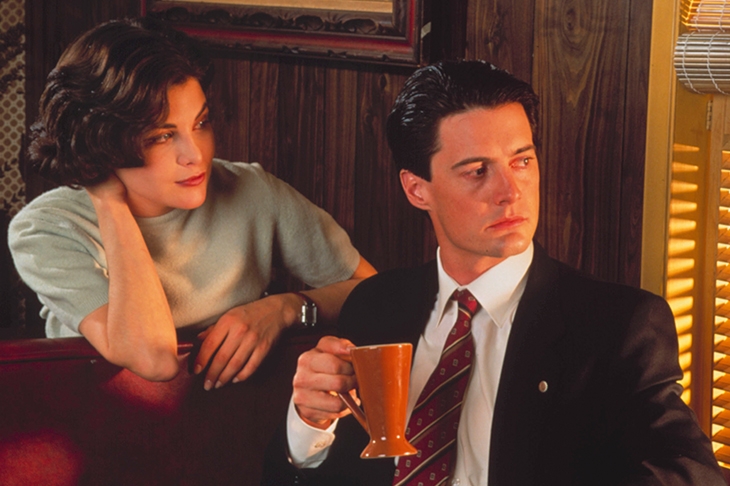If you want to appreciate why the return of Twin Peaks is so significant, then you need to know something of the background. And, no, not the background of the show itself, which rose and fell through two series before coming to a stop on 10 June 1991. Nor the background of its story, which began with the sodden corpse of Laura Palmer and concluded with the FBI agent Dale Cooper — or was it? — smashing his head into a mirror. But the background of the world into which Twin Peaks is returning. The terrible here and now.
This is a time when pop culture is being overrun by nostalgia for the 1990s. Scientists have identified the origin of this trend as the release of Jurassic World into cinemas a couple of years ago, but it has continued on through Pokémon Go, through this year’s Power Rangers movie, through the impending Baywatch film, and will even extend to a reboot of The Matrix franchise. Nineties nostalgia has supplanted Eighties nostalgia as one of the biggest forces in showbiz.
Some of this nostalgia is innocent and spontaneous. At other times, if you look hard at it, you can see the designs of the moneymen who want to relieve Nineties kids of their adult incomes.
Take Jurassic World. This wasn’t just a jacked-up repeat of Jurassic Park (1993); it also toyed with our memories of the earlier film. At one point, its obligatory nerd character explains why he’s wearing a T-shirt with the original park’s logo on the front. ‘I got it on eBay,’ he says. ‘That first park was legit.’ For viewers who were children when the first film was released, and who might have owned similar T-shirts back then, it was like being force-fed Proust’s madeleines until you were sick. This movie really, really wanted us to remember the good times of the 1990s.
The third series of Twin Peaks, which begins later this month, is both a part of the Nineties trend and apart from it.








Comments
Join the debate for just £1 a month
Be part of the conversation with other Spectator readers by getting your first three months for £3.
UNLOCK ACCESS Just £1 a monthAlready a subscriber? Log in